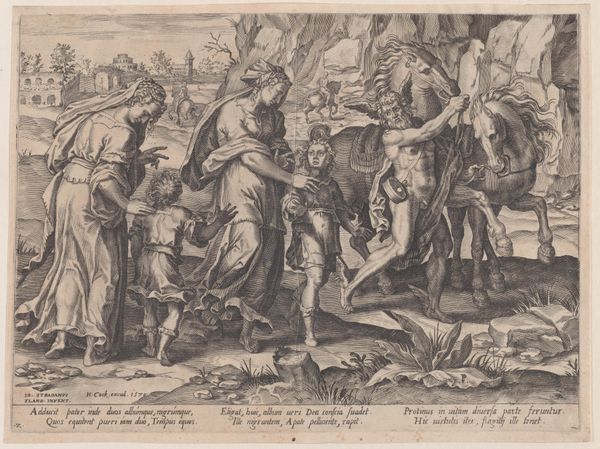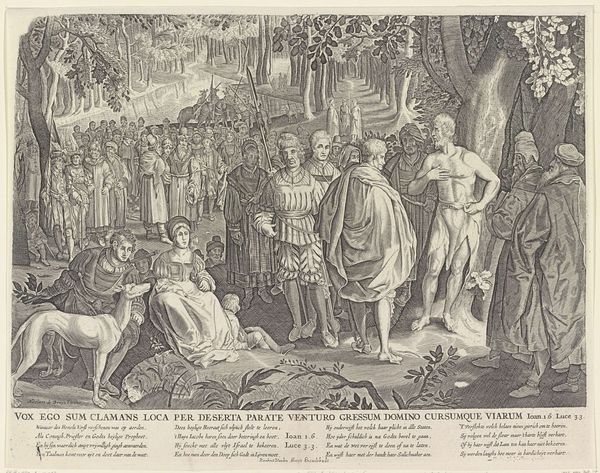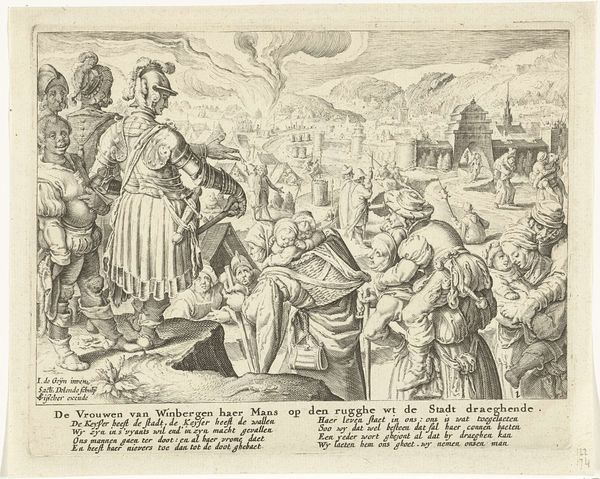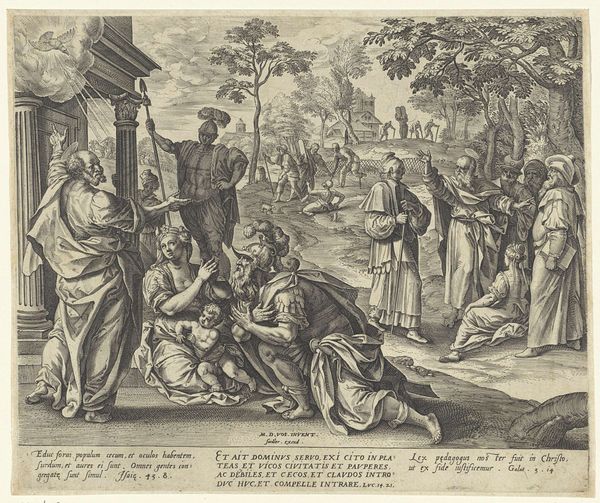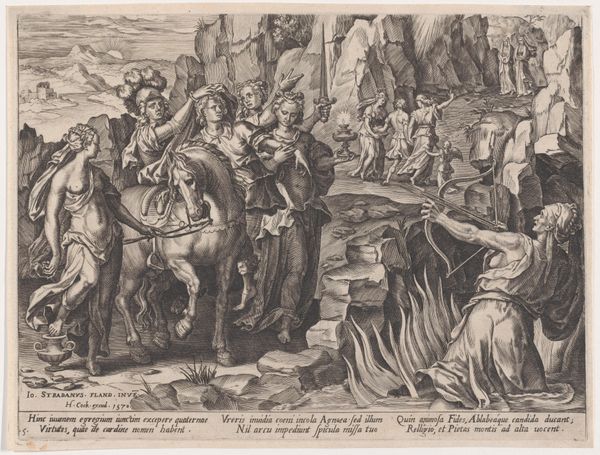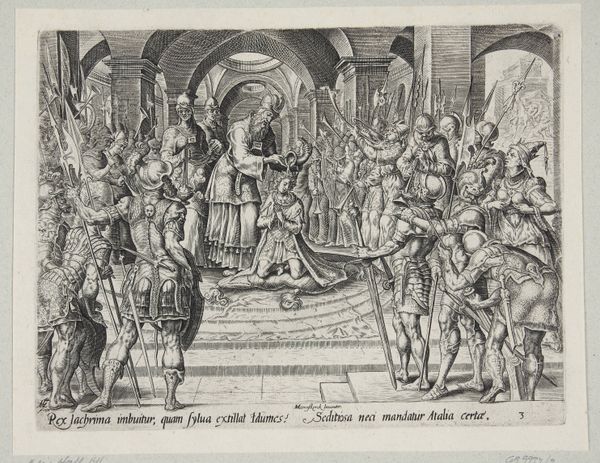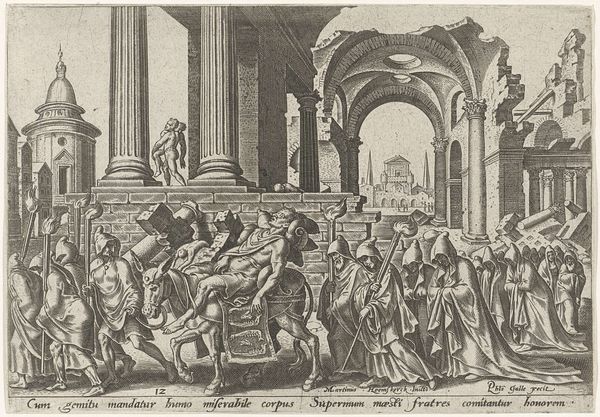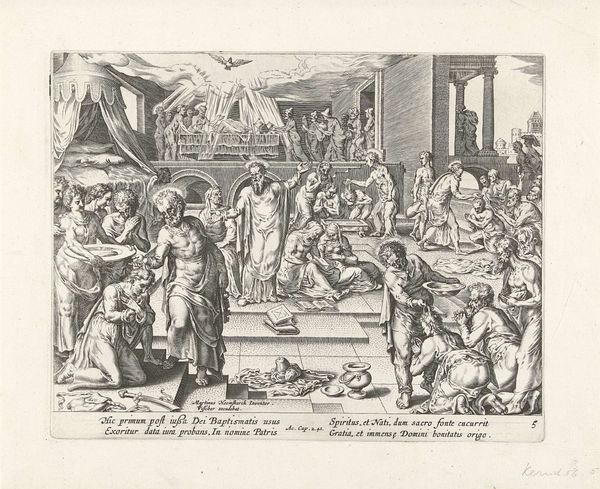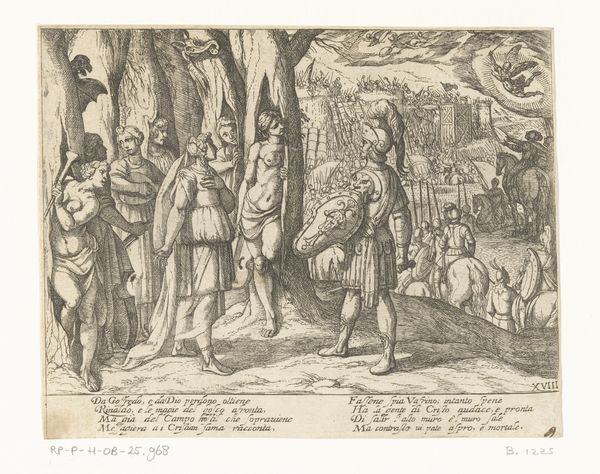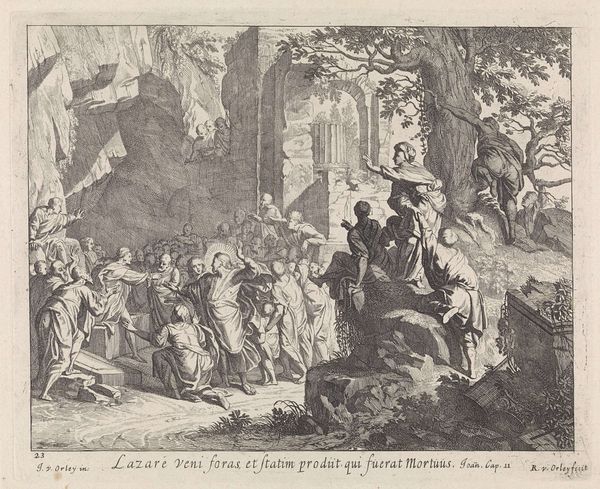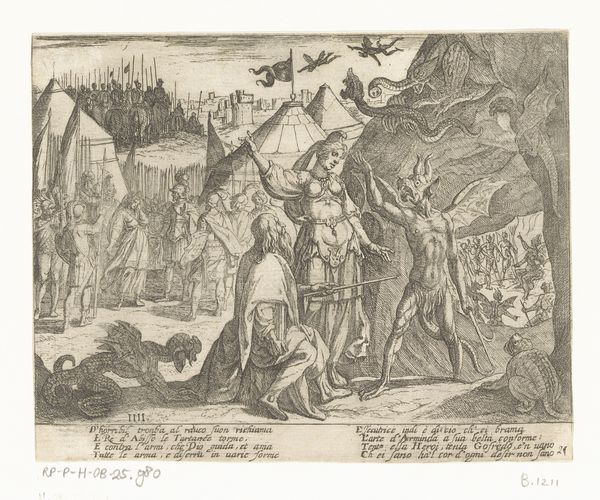
print, engraving
# print
#
landscape
#
figuration
#
11_renaissance
#
history-painting
#
northern-renaissance
#
academic-art
#
engraving
Dimensions: height 205 mm, width 276 mm
Copyright: Rijks Museum: Open Domain
Curator: Standing before us is "The Burial of Adam," an engraving executed in 1586 by Johann Sadeler I, and it's now held at the Rijksmuseum. Editor: The density of the image is immediately striking, wouldn't you agree? All of those tiny etched lines forming this almost claustrophobic scene of grief inside the cave. Curator: Absolutely. Consider the context: this is an era obsessed with precise engraving techniques. The creation of prints wasn't simply about replicating images but also demonstrating mastery of the craft itself. This image likely circulated widely, educating a broad public on religious narratives. Editor: And within those narratives, it's vital to observe how this biblical scene of mourning constructs particular ideologies. Note how the visual weight seems concentrated on the male figures, even in their grief, subtly reinforcing patriarchal structures. Is Eve even present, I wonder? It speaks to the roles prescribed and visually enforced. Curator: That’s a great point. The material choices are also pertinent. Engraving, with its replicability, allowed for standardized visual interpretations of religious stories that supported social and moral standards across society. Editor: Right, the labor itself, all of those carefully incised lines. It really humanizes the artist’s investment. The means of disseminating such moral narratives have a clear social purpose and it makes one reflect upon whose stories are deemed worthy and are promoted. It subtly tells a story about a specific gendered lineage that values the male. Curator: True. This wasn't a spontaneous gesture but a calculated method to transfer the image onto metal. The entire material reality and fabrication of the printing is equally critical. It makes me want to trace how many other depictions of the same scene might share common stylistic details as if echoing down through workshops! Editor: Examining this scene from both perspectives—its historical labor and social agenda–gives us a wider appreciation for the engraving. I realize that thinking beyond a simple reading of a Bible story prompts challenging inquiries, too. Curator: It reminds us that "art" always existed amidst concrete systems and specific processes. And so by recognizing the labour and historical backdrop behind works like Sadeler’s “Burial,” perhaps our viewing process becomes a bit less passive? Editor: Exactly, this work is only passively "religious," the artist sought active dissemination among a large group of viewers to encourage critical awareness.
Comments
No comments
Be the first to comment and join the conversation on the ultimate creative platform.
